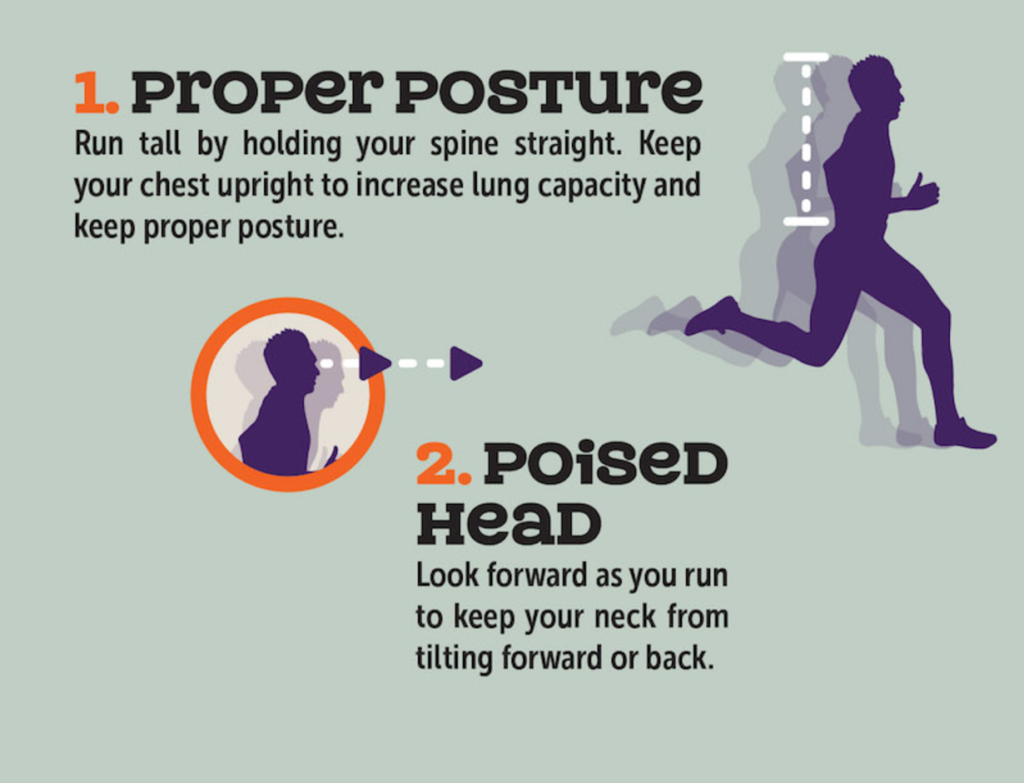Are you ready to take on a new challenge this upcoming year?
Running a marathon may seem like a far off dream, but in reality, with the right tools and training you can cross the ultimate finish line with confidence. Training for a marathon takes time, dedication, and perseverance, but you will be race ready within a year.
Whether you are starting from scratch or have been running casually for months, this training schedule for beginner runners will help you achieve a marathon.

The Tricks of the Trade
Training for a marathon is a large task to undertake, but it is doable, even for a beginner. With the latest craze in running, marathons are no longer for the elite. Now thousands of people run in marathons for a cause greater than themselves or for the great benefit of their own well being. Whether you have your eye on a certain marathon or are still browsing, there are a couple tricks of the trade you should be aware of when first starting out.
Gear Up Properly
Training not only is about the miles you put in, but about the gear you decide to take along with you for the ride. Invest in clothing that wicks away moisture and keeps you cool and dry while running. Leave the cotton shirts for rest days, and focus on materials such as synthetic fiber blends, merino wool, or rayon. Your running clothes should fit snugly to your body, too tight or too loose will cause distraction and less efficiency. Find clothes that help you feel confident and ready to take on the race of a lifetime.
Shoes are also an essential part to your gear. Find a pair of shoes that keep your body well balanced and stable for longer distances of running. If you regularly workout, make sure your shoes are ready to take on the terrain of the road and trail. With proper tread, cushion, and style, you will be able to conquer any obstacle in your way.

Fuel Your Body Right
Fueling your body right is recognizing how much nutrition and hydration play a role in how well you run. When you consume complex-carbohydrates, protein, and healthy fats, your body is able to replenish its energy for better running.

If you feel fatigued when you run, then take a look at what you eat throughout the day. Check out our Nutritional Guide for Beginner Runners for more information of how you can fuel your body in the way it needs. Find what foods work for you that can help your body feel healthy and strong.
Hydration is also essential in helping your body perform well. You should be consuming around 2 to 2.5 litres of water a day. It does not always mean just consuming water, it also means eating foods that contain water.
Foods such as cucumbers, celery, cauliflower, watermelon, and tomatoes all can keep your body well hydrated. Know what your body needs to stay properly hydrated and always drink water before, during, and after you run. Consider investing in a hydration pack or belt to keep yourself hydrated on longer runs and to carry a protein bar or gel of your choice.
Aspects of Training
There are several aspects to training that are important to know when following a schedule. Training is about slowly building up your endurance and stamina to be able to run 26.2 miles in one day. Taking a year to train towards a marathon gives you a good amount of time and buffer room where you need it.
You should be running only three to four times a week when first starting out, which means supplementing your runs with cross training and rest. Long running days only come once a week, which means the other running days are for one short run and one or two medium runs. As you get more comfortable with running, you will be ready to take on faster speeds and intensities during your runs.

Short Runs
Short runs are designed to focus more on your body's stamina and for active recovery from long runs. When you are first starting out, it is recommended to interchange running with walking every couple of minutes. It teaches your body to control your breathing and create a foundation of strength to be able to handle running for longer periods of time. Short runs are between 1 and 5 miles and are a great way to begin your week of running.
Medium Runs
Medium runs are gearing you up for greater lengths while still maintaining the muscle responsiveness you need to stay in control. Space your running days out to give your body the rest it needs and keep your medium runs between 5 and 10 miles.

Long Runs
Long runs are your big running day. Ranging from 10 to 26 miles, long runs teach you the mental and physical strength it takes to reach the ultimate goal of finishing a marathon. Keep water with you, or strategically do loops and stop for water.
Hitting the Wall
Longer runs also involve you potentially “hitting the wall”. It happens to even the most experienced runners. Every fiber in your body will want to call it quits, but teach yourself to work past it and keep running. It is okay to walk for a couple minutes to get your bearings, but as you stride back into a run, fill your head with positive reinforcement to help you stick to your long term goals.
When you reach a physical and mental block, it may be due to a lack of carbohydrates in your system. Replenish your system by keeping an energy bar or gel with you to give your system the boost it needs to overcome and finish your workout strong.
Cross Training
Cross training is for in between days where you want to maintain your fitness, but without putting too much pressure on your body. Swimming, hiking, elliptical, strength training, and yoga are all forms of cross training that you can participate in. Find what exercise gives you the workout you need, but also helps you feel rejuvenated.
Resting
Rest days are vital for keeping up with your training schedule. Your body needs to reset itself through rest and replenish your muscles. If you decide to work on the yard over the weekend, that does not count as resting. Resting means letting your muscles heal and giving your body a break for the day. Your body will be thanking you, and you will be able to run better if you allow time to recoup.
Race Day
When you have put in all the training for the year, it will come to that big and fateful race day. Try not to overwork your body in the days leading up the race. You want your body to be properly rested before you take on the race of a lifetime. Be mindful of what nutrition and hydration you intake leading up to the race, as it can make or break a good race. When you reach water stations, slow your stride to a walk for consuming hydration easier before continuing to run.
Always keep a positive mental attitude during the whole race. You have trained for this moment, embrace it, feel it, and let it fill your body with an openness that brings you to greater heights and new achievements.

One Year of Training Schedule
Taking one year to train for a marathon means taking on your training schedule in four different phases. Each phase is around three months and will gently ease you into being able to run 26.2 miles.
Month One through Three
Month one through three are your beginning stages of training that acclimatize you to the demands of running. First step is to lace on your running shoes and get out the door. Once you steady your body to a jog, you will be ready for what is to come. Consider signing up for a 5k to keep yourself motivated in the early stages of training.
Set aside three days for running, two days for cross training, and two days of rest. Ease into your running days by interchanging jogging and walking every couple of minutes. Keep switching from jogging to walking, until you no longer need to walk. The idea is to build enough stamina to be able to at least jog for 4o minutes without having to stop. If you keep up with a consistent schedule of running, then you will have no problem building up to 40 minutes without stopping.

Focus on Form
As you are starting out, it can be hard to know what proper running form looks like. The first three months are ideal for focusing on your form and keeping your body properly aligned.
When you can maintain a strong core and good posture while running, you will be able to avoid any potential injuries that may cause hinderance to your training plan. The more you get into the swing of it, the more you come to understand how form effects your lower limbs.
Month Four through Six
Month four through six are key months for building up your strength and bumping up your mileage. Take your training to the next level by tacking on more miles at the end of your week and intensifying your cross training days. Take easier mileage weeks every other week to let your body ease into more mileage. For those who like to be organized, color code your calendar so you visually notice which week has more or less intensity.
Monday—–Tuesday—–Wednesday—–Thursday—–Friday—–Saturday—–Sunday
Rest 4 mi. 5-6mi. Cross Train Rest 7-9 mi. Cross Train
By the end of the sixth month, you should be able to finish 9 miles of running with ease. Slowly increase the speed at which you are running a little each week. Keep your short runs easy going, but begin to increase your speed during your medium runs to build up better stamina. Keep in mind that the intensity of your cross training also makes a difference. Focusing on core strength will help your overall body and keep any potential injury at bay.
Run as you feel to maintain your fitness level and always take rest days or modify your mileage if you are experiencing pain. When you rest your body, you will be able to recover faster and get back to running sooner.
Month Seven through Nine
Month seven through nine are where you increase your endurance for better performance on race day. Continue to switch shorter mileage and harder mileage to every other week and try not to fear the long mileage days.
In this phase, try out runs that increase speed gradually and taper off at the end of your run. It will help teach your body to have a boost mode when you need it to increase your speed during a race.
Monday—–Tuesday—–Wednesday—–Thursday—–Friday—–Saturday—–Sunday
Rest 6 mi. 6-8 mi. 5-6 mi. Rest 6-7 mi. 9-12 mi.
You are more than capable of achieving. Give yourself time and the mental space to overcome the obstacle of longer mileage and keep running strong.
Month Ten through Twelve
Month ten through twelve are all about the mileage and adequately preparing your body to manage the hard miles of running a full marathon. The weeks leading up to race day are crucial for your body to have the endurance and strength it needs to power through to the finish. Breaking it down to the weeks leading up to your big day, here is an outline for what you should be running.
Week 1:
Monday—–Tuesday—–Wednesday—–Thursday—–Friday—–Saturday—–Sunday
Rest 6 mi. 9 mi. 6 mi. Rest 10 mi. Cross Train
Week 2:
Monday—–Tuesday—–Wednesday—–Thursday—–Friday—–Saturday—–Sunday
Rest 6 mi. 9 mi. 6 mi. Rest 12 mi. Cross Train
Week 3:
Monday—–Tuesday—–Wednesday—–Thursday—–Friday—–Saturday—–Sunday
Rest 5 mi. 5-6 mi. 5-6 mi. Rest 14 mi. Cross Train
Week 4:
Monday—–Tuesday—–Wednesday—–Thursday—–Friday—–Saturday—–Sunday
Rest 6 mi. 9 mi. 5-6 mi. Rest 15 mi. Cross Train
Week 5:
Monday—–Tuesday—–Wednesday—–Thursday—–Friday—–Saturday—–Sunday
Rest 6 mi. 6-8 mi. 5-6 mi. Rest 12 mi. Cross Train
Week 6:
Monday—–Tuesday—–Wednesday—–Thursday—–Friday—–Saturday—–Sunday
Rest 5 mi. 6-8mi. 5-6mi. Rest 16 mi. Cross Train
Week 7:
Monday—–Tuesday—–Wednesday—–Thursday—–Friday—–Saturday—–Sunday
Rest 6 mi. 6-8mi. 5-6mi. Rest 17 mi. Cross Train
Week 8:
Monday—–Tuesday—–Wednesday—–Thursday—–Friday—–Saturday—–Sunday
Rest 6 mi. 6-8mi. 5-6mi. Rest 19 mi. Cross Train
Week 9:
Monday—–Tuesday—–Wednesday—–Thursday—–Friday—–Saturday—–Sunday
Rest 6 mi. 6-8mi. 5-6mi. Rest 20 mi. Cross Train
Week 10:
Monday—–Tuesday—–Wednesday—–Thursday—–Friday—–Saturday—–Sunday
Rest 6 mi. 6-8 mi. 10 mi. Rest 12 mi. Cross Train
Week 11:
Monday—–Tuesday—–Wednesday—–Thursday—–Friday—–Saturday—–Sunday
Rest 5 mi. 6-8 mi. 8 mi. Rest 4 mi. Cross Train
Week 12-Race Week:
Monday—–Tuesday—–Wednesday—–Thursday—–Friday—–Saturday—–Sunday
Rest 3 mi. 4 mi. 2 mi. Rest Rest Marathon 26.2 mi
Training is about balance, strength, and building up your mileage to achieve a marathon in one year. There are several different approaches to training for a marathon, but this schedule eases you into mileage and helps you build a solid foundation for stronger running and better performance.

